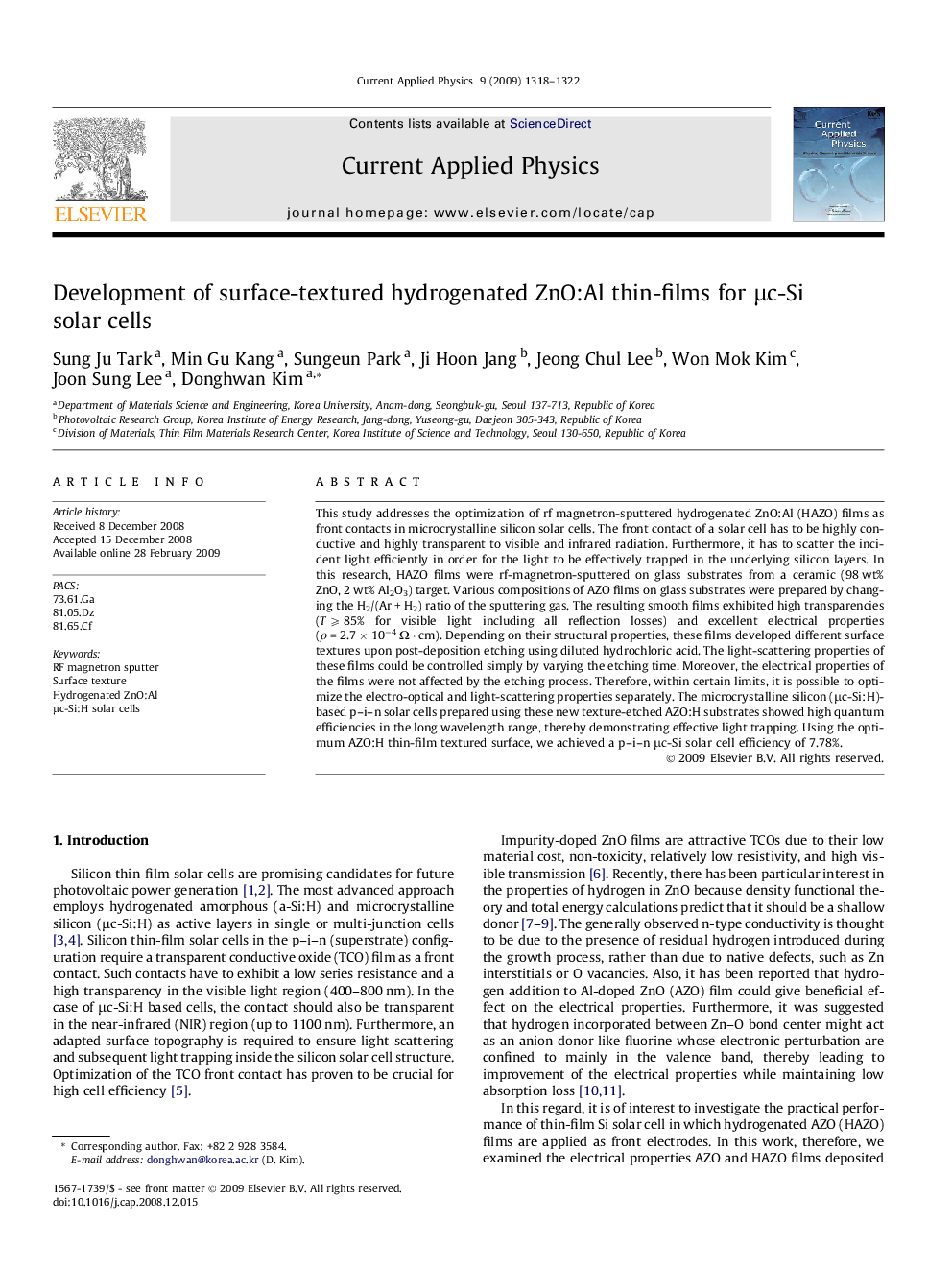| Article ID | Journal | Published Year | Pages | File Type |
|---|---|---|---|---|
| 1789068 | Current Applied Physics | 2009 | 5 Pages |
This study addresses the optimization of rf magnetron-sputtered hydrogenated ZnO:Al (HAZO) films as front contacts in microcrystalline silicon solar cells. The front contact of a solar cell has to be highly conductive and highly transparent to visible and infrared radiation. Furthermore, it has to scatter the incident light efficiently in order for the light to be effectively trapped in the underlying silicon layers. In this research, HAZO films were rf-magnetron-sputtered on glass substrates from a ceramic (98 wt% ZnO, 2 wt% Al2O3) target. Various compositions of AZO films on glass substrates were prepared by changing the H2/(Ar + H2) ratio of the sputtering gas. The resulting smooth films exhibited high transparencies (T ⩾ 85% for visible light including all reflection losses) and excellent electrical properties (ρ = 2.7 × 10−4 Ω · cm). Depending on their structural properties, these films developed different surface textures upon post-deposition etching using diluted hydrochloric acid. The light-scattering properties of these films could be controlled simply by varying the etching time. Moreover, the electrical properties of the films were not affected by the etching process. Therefore, within certain limits, it is possible to optimize the electro-optical and light-scattering properties separately. The microcrystalline silicon (μc-Si:H)-based p–i–n solar cells prepared using these new texture-etched AZO:H substrates showed high quantum efficiencies in the long wavelength range, thereby demonstrating effective light trapping. Using the optimum AZO:H thin-film textured surface, we achieved a p–i–n μc-Si solar cell efficiency of 7.78%.
